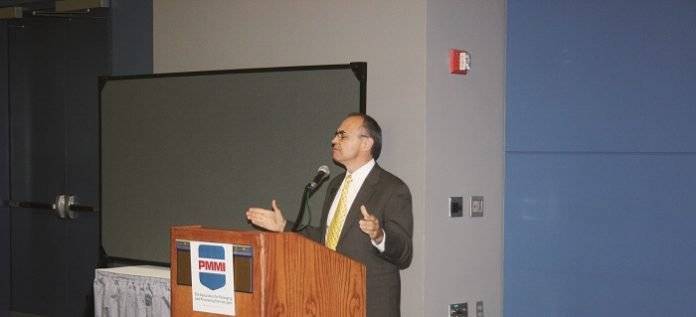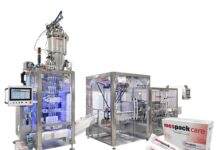
Domestic US shipment of packaging machinery is expected to grow at a compound annual growth rate of 2.4% reaching US$ 8.5 billion in 2020, according to a report by Pack Expo owner and producer, The Association for Packaging and Processing Technologies (PMMI).
The Packaging Machinery Report was officially released on 6 November during a media event at the Pack Expo and Pharma Expo venue in Chicago. The report says that half of this growth is expected to come from the food and beverage sector.
In 2015, the value of domestic shipments of US-produced machinery rose 0.3% to US$ 7.51 billion. Exports of packaging machinery in 2015 increased by 3.2%, compared to 2014 and are now US$ 1.1 billion. Backlog orders of packaging machinery grew by 14.1% compared to backlog orders at the end of 2014, the report says.
“The forecast for the packaging machinery market is strong. We continue to anticipate growth in major market segments such as pharmaceutical as well as beverage. Factors such as changing consumer habits, new regulations as well as general economic development are fuelling this development,” says Jorge Izquierdo, vice president – market development, PMMI.
PMMI produces the State of the Industry study based on US Census Bureau reports and shipments data provided by association members who manufacture packaging machinery. The report, which analyzes 28 packaging machinery categories, describes trends and the outlook for packaging machinery shipments through 2020.
According to the report, the labeling, decorating and coding and case handling machinery groups are forecast to increase the fastest of all machinery types through 2020, at annual growth rate of 3.9% and 2.5%, respectively. The pharmaceutical sector is forecast to grow the fastest of all sectors through 2020, at 2.8%. This is followed by the beverage sector, which is forecast to grow at annual compounded rate of 2.4%.
With regard to the machinery categories, the rapid growth anticipated in the labeling, decorating and case handling segment is largely a result of new legislation demanding increased labeling and coding, continuing developments in printing technologies and the proliferation of SKUs.











